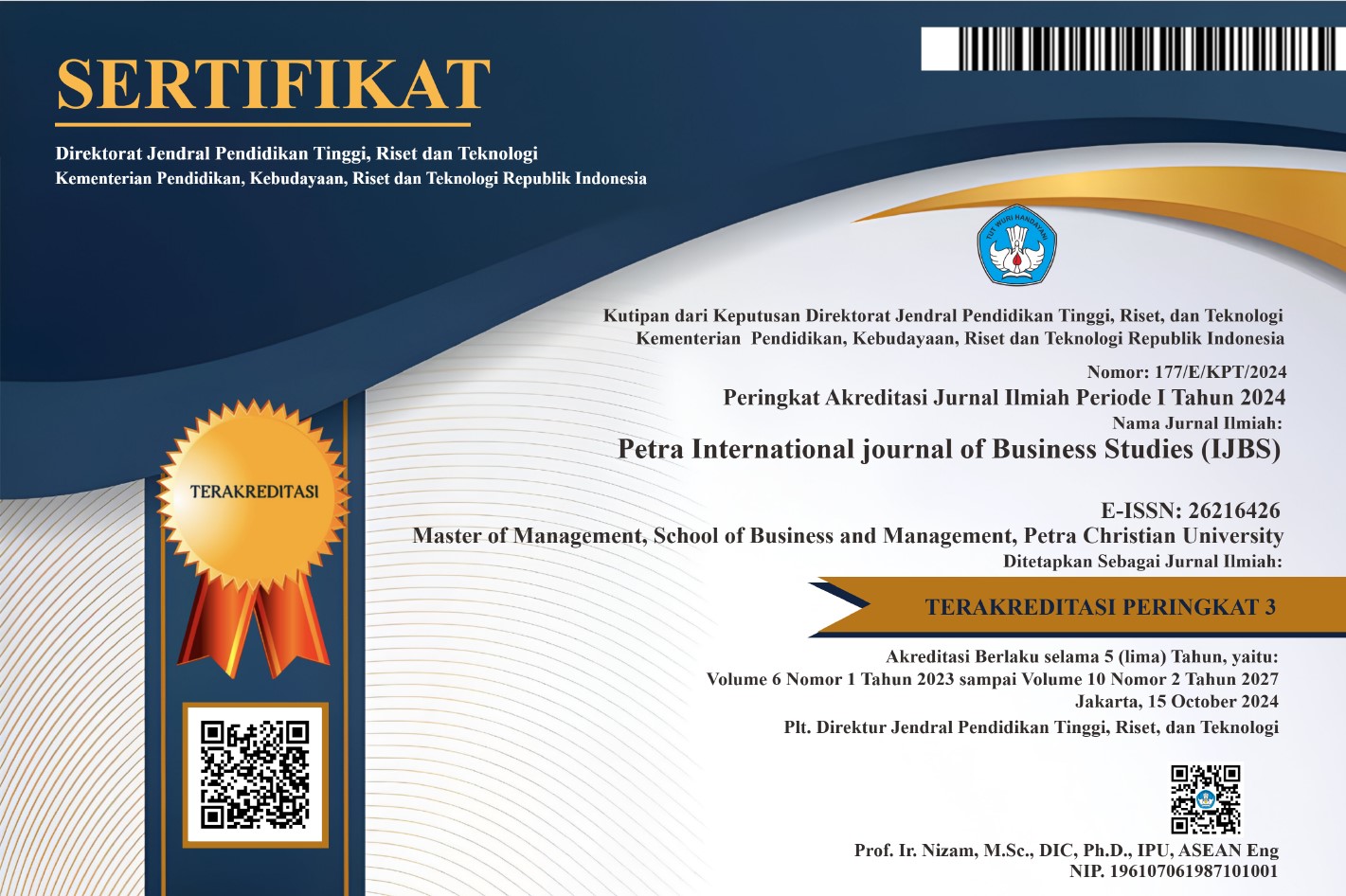The Practice of Marketing Public Relations In Multinational Companies in Indonesia
DOI:
https://doi.org/10.9744/ijbs.2.2.78-86Keywords:
Marketing Public Relations; Multinational companies; IndonesiaAbstract
The growth of public relations and its acceptance as a valuable, sometimes essential, marketing practice is practically universal . This study aims to find out the marketing communication models applied in Multinational companies in Indonesia. The study provides an analysis of the role of marketing public relations in Multinational companies and this study also explores the role of marketing public relations in the multinational or global companies in Indonesia, to establish whether it is considered to be an important function for a multinational company. The data was gathered through in-depth interview and telephone interview technique involving six multinational companies in Indonesia. The result of this study shows that Marketing public relations officers in multinational companies in Indonesia do apply a mixed model of communications in their operations. This mixed model is a mixture of the press agentry and a two-way asymmetrical model. These two models seem to be the models which are applied in most multinational companies in Indonesia, even though they still use external agencies (consultancies) for handling certain issues.
Downloads
References
Anggoro, M. L. (2008). Teori dan profesi kehumasan serta aplikasinya di indonesia (5th ed.). Bumi Aksara.
Brannan, T. (2005). Integrated Marketing Communication: Memadukan Upaya Public Relations, Iklan dan Promosi Untuk Membangun Identitas Merek. Jakarta: Penerbit PPM
Dennis L. Wilcox, Glen T. Cameron, B. H. R. (2015). Public Relations - Strategies and tactics. Pearson (11th ed.). Pearson Education Limited. https://doi.org/10.4324/9781315181660
Ferdausy, Shameema, M. S. R. (2009). Impact of Multinational Corporations in Developing Countries. The Chittagong University Journal of Business Administration, 24, 111–137.
Grunig, J. E. (2004). Two-way symmetrical public relations: Past, present, and future. In Handbook of Public Relations. https://doi.org/10.4135/ 9781452220727.n1
Grunig, J. E. (2017). Excellence Theory in Public Relations. In The International Encyclopedia of Communication. https://doi.org/10.1002/978140 5186407.wbiece047
Grunig, J. E., and H. T. (1984). Managing Public Relations.pdf (1st ed.). New York: CBS College Publishing.
Hall. E.T. (1973). The Silent Language. New York: Anchor.
Harris, T. L. (1993). The Marketer’s Guide to Public Relations (2nd ed.). New York: John Wiley & Sons, Inc.
Hart.N.A (2014) Strategic Public Relations. Great Britain: Antony Rowe Ltd.
Kennedy J.E & Soemanagara R.D.(2006) Marketing Communication: Strategi & Taktik. Jakarta : PT. Bhuana Ilmu Populer.
Kotler, Phillip & Amstrong, G. (2016). Principles of Marketing. Invasive Bladder Cancer (16th ed.). Edinburgh: Pearson Education Limited.
Leichty, G., & Springston, J. (1993). Reconsidering public relations models. Public Relations Review. https://doi.org/10.1016/0363-8111(93) 90055-H.
Perkins, L. (2015). The Community Manager’s Playbook. Apress.
Priyatna, S. (2001). Konsep Marketing Public Relations di Tengah Pasar Global. MediaTor (Jurnal Komunikasi), 2(2), 213–216.
Setiadi E, Adiwijaya M, & Subagio H.(2018) The impact of Brand Awareness and Country of Origin on Purchase Intention with Mediation of Self Congruity on Chinese Brand Automotive Products Wuling. International Jurnal of Busi¬ness Studies, Vol 1 (2), pp.70-79
W.L.Hill, C. (2013). International Business. Develop-ment (9th ed). McGraw-Hill.
Additional Files
Published
Issue
Section
License
Petra IJBS (e-ISSN: 2621-6426) is published by Master of Management program, School of Business and Management, Petra Christian University, Indonesia (MM SBM PCU).












